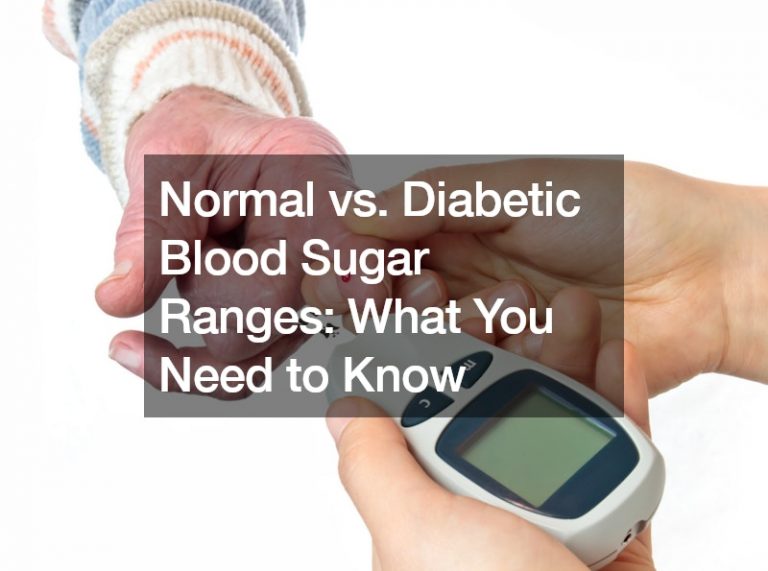Blood sugar, or glucose, levels play a crucial role in maintaining overall health. Whether you have diabetes or not, understanding the differences in blood sugar ranges is essential for managing your well-being effectively.
What is Normal Blood Sugar?
For individuals without diabetes, normal blood sugar levels vary throughout the day but typically remain within a specific range. A key measure is fasting blood sugar, which is taken after at least eight hours of fasting. In the United States, normal fasting blood sugar levels are generally below 99 milligrams per deciliter (mg/dL).
This means that after an overnight fast without food, the blood sugar level should be under this threshold to indicate good metabolic health.
Understanding Pre-diabetes and Diabetes
If fasting blood sugar levels consistently range between 100 to 125 mg/dL, it may indicate pre-diabetes, a condition where blood sugar levels are higher than normal but not yet high enough to be diagnosed as diabetes. On the other hand, a fasting blood sugar level of 126 mg/dL or higher on two separate occasions typically indicates diabetes.
Normal Blood Sugar Targets for Diabetics
For individuals managing diabetes, the target blood sugar levels are different from those without the condition. The primary goal is to keep blood sugar levels within a safe range to minimize complications. Ideally, fasting blood sugar levels for diabetics should be below 130 mg/dL. However, individualized targets may vary based on factors such as age, overall health, and other medical conditions like kidney disease or cardiovascular risk factors.
Post-Meal Blood Sugar Levels
After eating, blood sugar levels naturally rise as the body digests food and releases glucose into the bloodstream. In non-diabetic individuals, blood sugar levels typically peak below 140 mg/dL and then gradually return to normal within a few hours. For diabetics, post-meal blood sugar targets are generally less than 180 mg/dL to avoid spikes that can lead to complications over time.
A1C Levels: Understanding Long-term Blood Sugar Control
Another crucial measure in diabetes management is the A1C test, which provides an average of blood sugar levels over the past two to three months. A normal A1C level for individuals without diabetes is typically below 5.7%. For diabetics, the goal is generally below 7%, but lower targets (like below 6.5%) may be appropriate for some individuals based on their health status and risks.
Individualized Care Plans
It’s important to note that diabetes management isn’t one-size-fits-all. Blood sugar targets and treatment plans should be personalized to each person’s unique circumstances. Factors influencing these decisions include age, overall health, presence of complications like kidney disease, and the risk of hypoglycemia (low blood sugar).
Monitoring Blood Sugar Levels
Regular glucose monitoring is crucial for diabetics to track their blood sugar levels throughout the day. This involves using a glucose meter to measure blood sugar from a tiny drop of blood, typically obtained by pricking the finger. Monitoring helps individuals understand how their body responds to food, exercise, medication, and other factors, enabling adjustments to maintain stable blood sugar levels.
Managing Blood Sugar Effectively
Managing blood sugar levels effectively involves a combination of lifestyle modifications, medication adherence (if prescribed), and regular medical check-ups. Lifestyle changes may include adopting a healthy diet rich in fruits, vegetables, lean proteins, and whole grains, along with regular physical activity. Medication, such as insulin or oral medications, may be necessary to help control blood sugar levels.
Role of Diet in Managing Blood Sugar
Diet plays a crucial role in managing blood sugar levels for individuals with diabetes. The main focus is on controlling carbohydrate intake because carbohydrates directly impact blood glucose levels. Carbohydrates are broken down into glucose during digestion, causing a rise in blood sugar. For this reason, it’s essential for individuals with diabetes to monitor their carbohydrate intake carefully.
When to Seek Medical Advice
If you’re unsure about your blood sugar levels or suspect you might have diabetes, it’s crucial to consult a healthcare professional promptly. They can perform diagnostic tests, such as fasting blood sugar tests, A1C tests, and glucose tolerance tests, to determine your condition accurately. Early diagnosis and intervention can help prevent complications associated with diabetes.
Long-Term Complications of Poorly Managed Diabetes
Poorly managed diabetes over time can lead to serious health complications affecting various parts of the body. High blood sugar levels can damage blood vessels and nerves, leading to long-term complications such as cardiovascular disease. This includes conditions like heart attack, stroke, and peripheral artery disease.
Conclusion
In conclusion, whether managing diabetes or striving for overall health, awareness of blood sugar ranges and proactive management are key steps towards a healthier future. By monitoring blood sugar levels, adhering to personalized treatment plans, and making lifestyle changes, individuals can achieve better control of their condition and reduce the risk of complications. Regular consultations with healthcare providers ensure that blood sugar targets are adjusted as needed to support long-term health and well-being.
.






